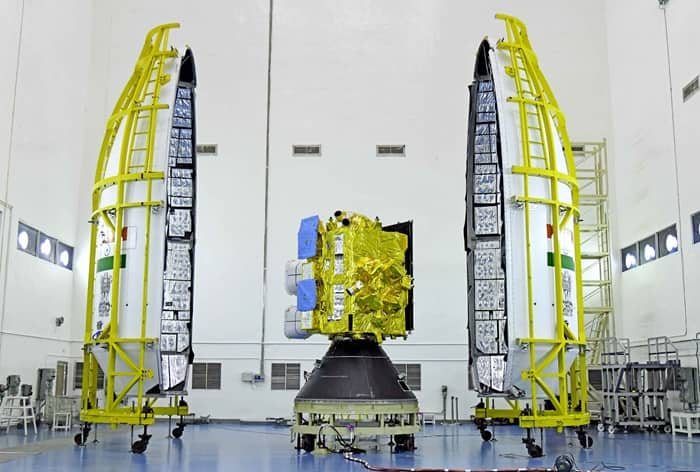This satellite will strengthen weather observations as well as land and ocean monitoring for forecasts and disaster warning.
ISRO is all set to launch its meteorological satellite INSAT-3DS on February 17. This satellite will significantly improve meteorological observations and contribute to better weather forecasting and disaster warning systems. The INSAT-3DS satellite is a follow-on mission of a third-generation meteorological satellite that will be placed in geostationary orbit. It is fully funded by the Ministry of Earth Sciences (MoES).
The launch of the GSLV F14/INSAT-3DS mission is scheduled for Saturday at 5:30 PM from the Satish Dhawan Space Center (SDSC) SHAR in Sriharikota, according to ISRO. This satellite will strengthen weather observations as well as land and ocean monitoring for forecasts and disaster warning. It will also complement the operational INSAT-3D and INSAT-3DR satellites, strengthening meteorological services.
“The launch of the GSLV-F14/INSAT-3DS mission is scheduled for Saturday, February 17, at 5:30 PM from the Satish Dhawan Space Center (SDSC) SHAR in Sriharikota,” ISRO said.
The primary objectives of the mission are:
- To monitor the Earth's surface, perform oceanic observations and its environment in various spectral channels of meteorological interest.
- Display the vertical profile of various meteorological parameters of the atmosphere.
- Providing the data collection and data dissemination capabilities from the data collection platforms (DCPs).
- Providing satellite-assisted search and rescue services.
In its 16th mission, the GSLV aims to place the satellite in a geosynchronous transfer orbit (GTO). Subsequent orbit elevation maneuvers will position the satellite in geostationary orbit, the space agency said.
The satellite is designed to provide enhanced meteorological observations and monitor land and ocean surfaces for weather forecasts and disaster warnings, the space agency said. The satellite will strengthen meteorological services along with the currently operational INSAT-3D and INSAT-3DR satellites, it added, stating that Indian industries have contributed significantly in making the satellite.
GSLV-F14
The Indian Space Research Organization (ISRO) has provided details about its GSLV launch vehicle. The GSLV is a three-stage vehicle with a length of 51.7 meters and a weight of 420 tons. The first stage, GS1, consists of a solid propellant engine containing 139 tons of propellant, along with four propellant stage strap-ons that can be stored in the Earth, each carrying 40 tons of liquid propellant. The second stage, GS2, also contains 40 tons of propellant, while the third stage, GS3, is a cryogenic stage with a propellant charge of 15 tons of liquid oxygen and liquid hydrogen. The GSLV is capable of launching various spacecraft for Earth's resource research, communications, navigation, and other missions.


